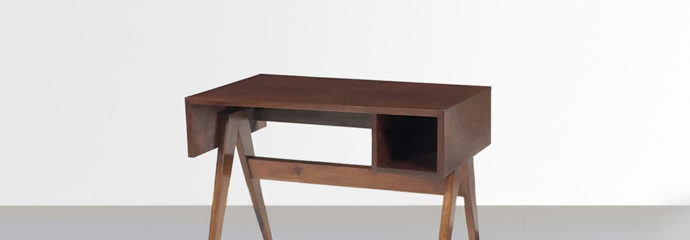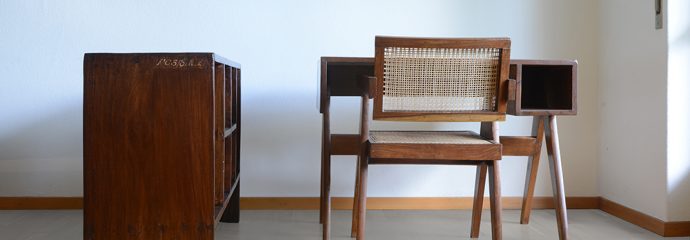PJ-BU-08-B
PJ-BU-08-B
Student desk in solid teak. Rectangular top with drop-down sides. Pair of “compass” type side legs, ca. 1960.
Price:
on request
Dimensions:
700mm x 550mm x 990mm
Material:
Solid teak


Student desk in solid teak. Rectangular top with drop-down sides. Pair of “compass” type side legs, ca. 1960.
on request
700mm x 550mm x 990mm
Solid teak
High round stool in solid teak and braided canework. Circular seat with teak and canework frame, ca. 1965.
on request
670mm x 370mm diameter
Solid teak, cane
stool from the residential buildings. leg assembly with four slanted, tapered legs, connected by two high side crosspieces, ca. 1960.
on request
460mm x 420mm x 330mm
Solid teak, upholstery
Bench with wood beams, ca. 1956
on request
1350mm x 420mm x 470mm
Solid teak
doublesided bookcase on five levels, ca. 1960.
on request
18250mm x 700mm x 1280mm
Teak, teak veneer
Big box of massive cane with cane, used in M.L.A flats, ca. 1956
on request
480mm x 710mm x 460mm
Solid teak, cane
Glass-fronted unit known as “bookcase” in solid teak. Quadrangular body with two sliding glass doors. Thick teak shelving inside, ca. 1960.
on request
880mm x 1380mm x 270mm
Teak, glass
Stools from the College of Architecture, ca. 1960.
on request
200mm x 550mm
Solid teak, enameled steel
Low teak cupboard with 4 doors and A-shaped legs, ca. 1957-1958
On request
880mm x 450mm x 1370mm
Solid teak, brass
Very rare table, known as “Boomerang table”. Thick, square veneered top with straight sides resting on four wide, tapered vertical legs, presented face-on. ca. 1963
The legs are the characteristic element of that table. They have the shape of two crossing bows. In his later work Le Corbusier loved to integrated elements of his philosophy into the shape. There were symbolic elements he started to added, giving his items a much deeper meaning. Le Corbusier has left long time ago the path of pragmatic and functional thinking and was more focusing on the mystical and spiritualistic aspects. So India with its strong spiritual connection was the perfect spot to express his ideas of an eternal truth.
That is one of the few pieces of design Le Corbusier designed for Chandigarh.
on request
71 x 243 x 121 cm
28 x 95.5 x 47.5 in
Solid teak, thick teak veneer
Assembly building, Chandigarh.
Eric Touchaleaume and Gerald Moreau, Le Corbusier, Pierre Jeanneret, The Indian Adventure, Paris, 2010, p. 246-47, 582.

